IndiaWilds Newsletter Vol. 3 Issue I
This issue of IndiaWilds Newsletter Vol. 3 Issue I examines issues surrounding some of our often ignored but highly fragile Shola forests. You can post your comments below.
Save our Sholas:
When one views the rows of tea bushes immaculately manicured – yes the tea leaves are cut instead of being plucked in the tea gardens of South India – with a few tall trees planted in rows, one loves the symmetry and gets bowled over by the greenery. Tourists start flocking to have a vacation in these tea estates of Munnar, Valparai etc, which incidentally have a much cooler climate and perhaps soothes the frayed nerves of the tourists. They come back with picture postcards of their vacation in abundant greenery.
If you really think it is green in the true sense, wait a minute.
The tea estates came up when the British started clear felling the shola forests and establishing the tea estates. In those days, the estates were few. However, after the departure of the colonial masters, more and more people started colonizing these wilderness areas, replacing those with tea estates and exotic plantations.
Wild India: Shola forests:
The Shola forests – which are broadly categorized as tropical montane forests – can be found in the western ghats at an altitude upwards of 1500 meters. The shola forests are generally found in patches in the depressions of mountains with grasslands bordering it.
Sholas and Mega fauna:
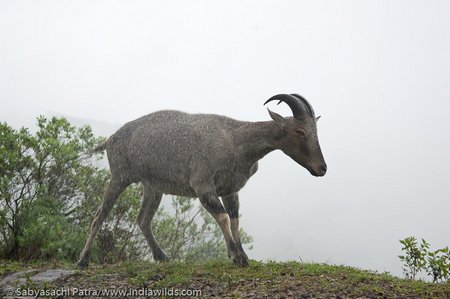 The shola forests and grasslands are home to an endemic species Nilgiri Tahr who are adept in
The shola forests and grasslands are home to an endemic species Nilgiri Tahr who are adept in 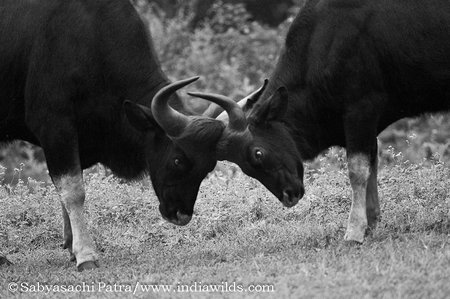 escaping from predators by climbing the steep hill slopes. I found numerous scats and dungs of tiger, dhole, elephant and gaur apart from Nilgiri Tahr. In one place there was scat of tiger and dung of elephant and gaur forming a triangle of about 8-10 feet.
escaping from predators by climbing the steep hill slopes. I found numerous scats and dungs of tiger, dhole, elephant and gaur apart from Nilgiri Tahr. In one place there was scat of tiger and dung of elephant and gaur forming a triangle of about 8-10 feet.
Sholas and Water:
This high altitude ecosystem of Sholas and grasslands helps in absorbing water and stopping the water runoff and the consequent erosion.
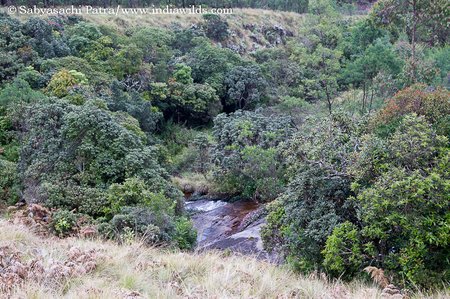
It is interesting to know that the term Shola was derived from the word “Cholai” in Tamil (small water body within a vegetation cover/ shaded and wet area). According to Swarupanandan the origin of the word Chola or Cholai can be traced to the word ‘Jal’ in Sanskrit, which means water. (Ref.Swarupanandan, et al., 1998)
Retention of Organic Carbon in Shola Forests:
A study (Ref. V. Nandakumar et al) found that the shola forests show more organic carbon content in the soil than evergreen forests, grasslands and eucalyptus plantations.. The dense canopy created by the shola forests leads to less exposure to sunlight vis-�-vis grasslands or eucalyptus plantations. The unique microclimate within the Sholas with a low and steady temperature and high humidity reduces the evaporation and transpiration demands on the shola vegetation. This unique microclimate together with less soil erosion, leads to more addition of litter than its removal and hence results in net increase in organic carbon content. This role of Sholas in conserving more carbon compounds in the soil compared to dry grasslands and eucalyptus plantations has not been given much of importance till date.
The study also found that Shola forests has higher Cation Exchange Capacity and has higher organic matter, clay content, lower bulk density and volume expansion and has better protection for nutrient cations compared to grasslands and eucalyptus plantations due to the higher cation binding power.
Wild India: Threats to Shola forests:
Impact of Cultivation on Shola Forests:
The tea estates brought people to work as labourers. They in turn started cultivating vegetables which they were habituated to. Over a period of time, the tribals realised that beans, carrot, cabbage etc which were cultivated by the labourers gave much higher economic returns than the crops traditionally cultivated by the tribals. To make matters worse the tribals also learnt the use of synthetic pesticides and fertilizers. So it is not only the tea estates who use synthetic fertilizers and pesticides, but also the tribals, polluting the fresh water streams that originate from the area.
Lemon Grass Cultivation:
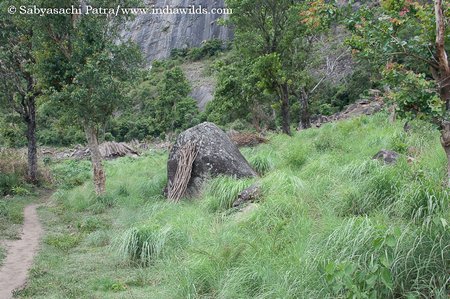 The crops like beans, cabbage etc require attention, so the tribals can’t cultivate it very large areas. However, they discovered that lemon grass cultivation doesn’t require much attention. The lemon grass oil which is extracted from the lemon grass is easier to transport after distillation. So most of the high hills in the Tamil Nadu and Kerala areas in the Annamalai and Chinar Wildlife Sanctuary looks green from a distance, however, on closer look one finds that it is cultivated with lemon grass, which none of the herbivores like nilgiri tahr, gaur, elephants etc eat. So the lemon grass has no positive contribution. Ofcourse, one can say that lemon grass cultivation leads to binding of the soil and water runoff is arrested. However, the shola forests and grasslands that were there before these lemon grass cultivation started have a much higher capacity of water absorption.
The crops like beans, cabbage etc require attention, so the tribals can’t cultivate it very large areas. However, they discovered that lemon grass cultivation doesn’t require much attention. The lemon grass oil which is extracted from the lemon grass is easier to transport after distillation. So most of the high hills in the Tamil Nadu and Kerala areas in the Annamalai and Chinar Wildlife Sanctuary looks green from a distance, however, on closer look one finds that it is cultivated with lemon grass, which none of the herbivores like nilgiri tahr, gaur, elephants etc eat. So the lemon grass has no positive contribution. Ofcourse, one can say that lemon grass cultivation leads to binding of the soil and water runoff is arrested. However, the shola forests and grasslands that were there before these lemon grass cultivation started have a much higher capacity of water absorption.
The lemon grass needs to be distilled to extract the lemon grass oil. This requires huge amounts of firewood. One of the muduvan village (tribals) that I visited told us that they have collected firewood for the next five years, as they know that all the hills are denuded and there are no trees to be cut. Certainly a sad state of affairs!
The recent explosion of tourist traffic to areas like Munnar have further increased the demand of the lemon grass oil. In the last one year alone, the price of lemon grass oil has increased form With such a lucrative income available, it is unlikely that the tribals like muduvans will ever think of relocating from the forest areas. In a few places, there are efforts to provide efficient distillation units to lower the firewood consumption, however, there are no long-term solutions to control the structural changes brought out by the lemon grass cultivation. Rather, there are efforts being made to create pucca roads inside the sanctuary using the NREGA program.
Firewood Collection from Shola forests:
It was interesting to note that among the tribal populace, the firewood collection is mostly done by the women and children. Most of it is done from the Sholas and a small percentage from the wattle and other exotic plantations and from the estates. Firewood collection from the sholas has got a deleterious impact on the sholas. It may be pertinent to mention that the shola forests are unique in their composition with fire resistant trees on the periphery. Cutting those down will leave them vulnerable to future fire threats.
Grazing in Shola Forests:
Grazing places a huge threat on the sholas. In an article in Ecological Economics, Perrings and Walker mentions that cattle grazing lowers the resilience of the ecosystem. It also gives rise to the chances of invasive weeds entering into the shola ecosystem.
Eucalyptus Plantation replacing shola forests:
In the past wattle and eucalyptus plantations have been set up by the tea estates to serve their fire wood needs. However, with the increase in awareness about the deleterious impact of eucalyptus plantations, various State Governments have taken steps against it. However, In a recent visit to Devikulam range near Munnar in search of Nilgiri Tahr populations, I came across the ghastly sight of eucalyptus plantations near the shola forests at an approximate altitude of 2200 meters. Grasslands and shola forests have given way to these exotic eucalyptus plantations spread over several hills. When one comes to know that this is done by a State Govt. arm, it is indeed worrying. You can see the discussions on the two images here: http://www.indiawilds.com/forums/showthread.php?t=5774
And here: http://www.indiawilds.com/forums/showthread.php?t=5688
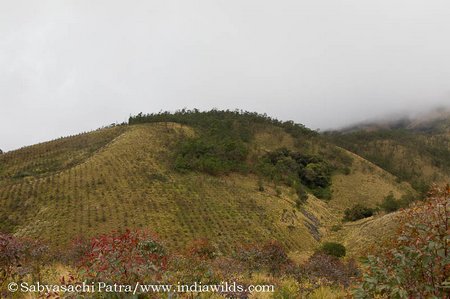
Reducing the organic matter content of these shola forests by burning, cutting down of the sholas, converting to eucalyptus plantations etc, will affect the water retention capacity of the soil. This in turn will reduce the water discharged to the streams that originate in these places. So the eucalyptus plantations have to be immediately cut down and the area left alone for natural regeneration of the native vegetation to take place.
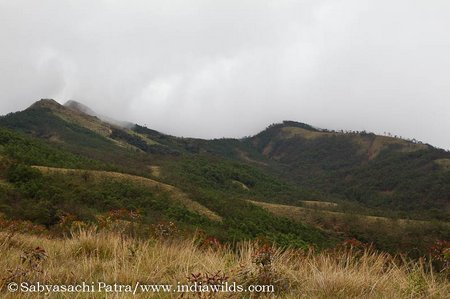
The shola forests has been described as a Climatic climax by Champion in 1938. Shola forests have taken several thousand years to evolve into their present stage of climax. Is it not criminal to clear fell these to make way for eucalyptus plantations?
The shola forests have an impact on our water security as well as climate change. In a country where conservation perhaps starts and ends with the tiger, I hope we understand the value of the shola forests. It is a part of our irreplaceable Natural Heritage. We don’t have much of time to save our sholas.
Other conservation issues:
The Rule of the Mob: Leopards beaten to death
Another leopard beaten to death on the outskirts of Bhubaneswar! (http://www.indiawilds.com/forums/showthread.php?t=5878 ) This just adds to the killing of leopards in various parts of the country. Virtually every other day we hear a story of leopard being beaten to death or trapped in a cage or burnt alive in a field or simply found dead and carcass burn (http://www.indiawilds.com/forums/showthread.php?t=5851) or a venerable wildlife Institute setting on fire the trees in its campus to drive away leopard (http://www.indiawilds.com/forums/showthread.php?t=4104). The other day the story was a bit different with a photo of one police officer published in the newspapers showing him shooting a leopard (http://www.indiawilds.com/forums/showthread.php?t=5842 ). It is tough times for the Panther pardus.
Leopards are remarkably adaptable. Their needs are frugal and can survive in degraded forests preying on lesser wild prey as well as a goat or a village mongrel. However, this adaptability seems to be acting like a millstone around its neck, as people feel that nothing needs to be done as the leopard can survive in its own in degraded habitat or sugarcane fields.
The explosion of human population and the consequent demands has led to clearing up of forests and its herbivore population. As a result, the leopard is now completely devoid of its natural prey and has to depend on livestock for its survival. A hungry leopard moving out of the small patch of forest land in search of another habitat with adequate prey base leads it to pass through human habitations and cultivated fields. This creates unfortunate scenarios, as the people are not used to seeing a spotted feline. Also this brings into fore our hidden nature which feels happy at someone else’s pain, a regressive mentality of decimating all other species infront of us.
To make matters worse, as in the case of the mob lynching to death the leopard near Bhubaneswar, a TV camera man wanted to search for exclusive footage (a la Al Jazeera TV) and reportedly instigated the people to take law into their hands. The result was inevitable. The forest department, as is the case everywhere in India, remained a mute spectator.
This unfortunate incident should not be passed over with just a feeling of sadness.
- The TV Cameraman needs to be arrested and the footage, computers etc should be sent for forensic examination.
- In such cases, in all parts of the country, Section 144 should be immediately issued and people arrested.
- All the persons, involved in the lynching should be arrested under the Wildlife Protection Act 1972. Being in a Mob should not be seen as a sure shot way of escaping being convicted.
- To save the leopard, a Project Leopard should be announced. A massive exercise to be undertaken in all the states to map the remaining suitable habitats. Suitable action plans to save the leopard to be drawn.
- We are on verge of losing the leopard. Instead of frittering our energy in creating grandiose plans for bringing in exotic species like African Cheetah and introducing them into cages, we have to act fast in saving our leopard. I would appreciate our members to raise their voice in support of this cause.
Culling orders on monkey, wild boar and Nilgai in Himachal Pradesh:
Who says that culling is only done in Africa and USA.
The Himachal Pradesh Forest department is issuing permits to shoot monkeys, wildboars and Nilgais. For further details please check here:
http://www.indiawilds.com/forums/showthread.php?t=5596
Wildlife Photography:
Images shared by our members between 10th Dec 2010 – 9th January, 2011 that depict interesting animal behaviour or are just plain beautiful.
The Rain and the Sun by Dr. Hari Venkatesh K R
http://www.indiawilds.com/forums/showthread.php?t=5741
Lady Paradise by Tushar Dixit
http://www.indiawilds.com/forums/showthread.php?t=5617
Pied Kingfisher by Praveen Siddannavar
http://www.indiawilds.com/forums/showthread.php?t=5623
Great Pied Hornbill Mrudul
http://www.indiawilds.com/forums/showthread.php?t=5764
My first Frogmouth by Tushar Dixit
http://www.indiawilds.com/forums/showthread.php?t=5825
Tiger Cub by Mrudul Godbole
http://www.indiawilds.com/forums/showthread.php?t=5587
The Yawn by Bibhav Behera
http://www.indiawilds.com/forums/showthread.php?t=5649
Traffic sense on crazy weekends – a message – Roopak Gangadharan
http://www.indiawilds.com/forums/showthread.php?t=5580
Moyar Valley by Mohan Raj
http://www.indiawilds.com/forums/showthread.php?t=5689
Funnel Web spider by Akshay Kumar Manjunath
http://www.indiawilds.com/forums/showthread.php?t=5786
I look forward to your inputs and your support in preserving the last tracts of wilderness and wildlife left in this beautiful country. For other interesting articles and photographs please check: http://www.indiawilds.com/forums/
The link to this Newsletter is available at:
All the newsletters can be found online at: http://www.indiawilds.com/diary/category/newsletter
In case, any member of IndiaWilds forums has forgotten his/her user id and password can email the admin at the following email id administrator@indiawilds.com Others may register at www.indiawilds.com/forums/register.php with their full name.
Regards,
Sabyasachi Patra
www.indiawilds.com
Profile: http://www.indiawilds.com/profile.htm
Contact: http://www.indiawilds.com/contact%20us.htm
Facebook: http://www.facebook.com/pages/IndiaWilds/132629240481
- GoPro Hero 12 Black - 6 September,2023
- Leopards: The Last Stand - 2 July,2023
- Drifting in the Waters of Sundarbans - 26 March,2023





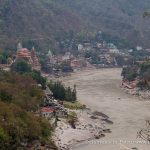






It is an eyeopener article for me.I visited munnar and was fascinated by the beauty of landscapes ,never thought that the beauty at the cost of shola forest.
Pratap,
Let me share another interesting fact. During your Munnar visit, you would have noticed the boards of Kannan Devan Tea estates and perhaps bought tea, spices, oils etc from the Kannan Devan Tea company shop. About 500 sq. kilometers of prime forest land was given to Kannan Devan Tea company at a price of One rupee and fifty paisa per acre!
Cheers,
Sabyasachi